How Two Bored Seventies Housewives Helped Create The laptop industry
Vector picture was probably the most very best-recognized pc producers of its era. It went public. Then the IBM laptop changed everything.
July 22, 2015
In April 1977, Steve Jobs and Steve Wozniak rented a sales space on the formative industry conference for the personal pc, the First West Coast computer Faire in San Francisco. They were there to launch Apple’s first step forward computer, the Apple II.
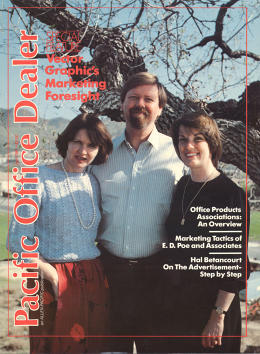
What few individuals be aware of as of late is that just a few rows away at the related exhibit, two girls from Southern California have been busy launching an modern desktop of their own. Lore Harp and Carole Ely of Westlake Village brought alongside the Vector 1, a laptop designed by Lore’s husband, Bob Harp. the pc derived its moniker from the identify of their young firm, Vector graphic, Inc.
At a time when Vector and Apple have been each tiny firms looking to gain a footing in a wholly new market, it was once not straight away glaring which company would change into more successful—for instance, Byte magazine’s record on the conference talked about Vector but spilled no ink on Apple, which might ultimately turn into essentially the most precious company on the earth.
For its section, Vector picture went on to change into probably the most highest identified computer makers of the late 1970s. Like Apple, it was once probably the most first laptop companies to go public, and like Apple, it set its products apart from the gang with its attention to industrial design.
however not like Apple, Vector vanished from the face of the earth. It faded from our collective memory because it didn’t live to tell the tale the large business upheaval caused by the discharge of the IBM computer in late 1981. very few computer makers did. however the story of how the Vector trio went from nothing to hovering success—and then cave in—is a story worth retelling.
“I can’t Stand Being at house”
historically, individuals transfer to the suburbs namely to avoid novelty. And yet, in Seventies California, suburbia often served as a crucible for entrepreneurial possibility-taking.
Many comprehend the story of how Steve Jobs and Steve Wozniak launched Apple with a foothold within the Jobs family storage in suburban Los Altos, California. round that very same time, about 350 miles south, a spirit of entrepreneurship similarly captivated an entire Westlake Village household. if truth be told, it pulled in the neighbors, too.

The Harps, who moved into the area within the early 1970s, have been a typical suburban domestic: a father that labored in an place of business all day, a stay-at-house mother, and two basic-college-aged girls. That father, Dr. Robert Harp, spent his days as a senior scientist for Hughes research Labs in Malibu, and his spouse, a up to date German immigrant named Lore, kept house.
When Lore Lange-Hegermann first visited California in 1966, on a solo go back and forth on the age of 20, she revealed an energizing ambiance of freedom from parental meddling and a common feel that anything was imaginable. “I felt as if I was chopping the umbilical wire for the 2d time,” she remembers.
against the desires of her parents, Lore determined to stay within the States. She picked up strange jobs until she met Bob Harp, who labored as a member of the faculty at Cal Tech. the 2 acquired married and had two daughters, and Lore earned a bachelor’s degree in anthropology from Cal State, la.
by using 1975, Lore started out to feel antsy. She discovered her skills losing whereas her kids spent their days in class and her husband did the 9-to-5 at Hughes. against this, as along with her oldsters, she rebelled. ”I can’t stand being at residence,” mentioned Lore in a 1983 new york times article. ”It drives me insane. everyone notion I was once odd as a result of i might not go to the bridge club or have my fingernails performed.”
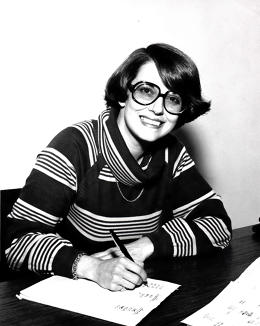
Lore Harp met a kindred spirit within the form of a neighbor, Carole Ely, whose kids shared classes with the Harp children. Like Lore, she found the lifetime of a homemaker wanting. “We were bored doing the housewife thing,” recalls Ely as of late. “I was able to be something.” just a few years prior, Ely had labored for giant investment corporations comparable to Merrill Lynch on the east coast, and she or he used to be itching to get again to industry.
together, the pair of bored housewives decided they wanted one thing extra productive to do. They started out to explore ideas for starting a brand new business. Drawing from their shared love of travel, they first thought to be beginning a travel agency, but the licenses required to function one proved too burdensome and the possibility of earnings too slim.
Then a uniquely Seventies possibility popped up. during an generation when the everyday small pc got here in a refrigerator-sized chassis and price tens of thousands of dollars, an Albuquerque engineer named Ed Roberts took benefit of the extremely-shrinking microprocessor to create a computer that hobbyists may construct themselves from a equipment.
That computer, the Altair 8800, debuted on the quilt of the January 1975 difficulty of common Electronics, which reached a wide target audience of technically-minded folks. Roberts’s company, MITS, become the pioneering firm of the private computer revolution.
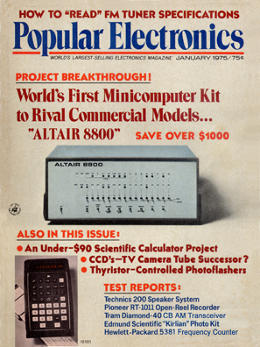
one of the most many electronics buffs who noticed that article—and positioned an order for an Altair package—was Bob Harp. When it arrived, he discovered its memory board poorly designed. as a substitute of returning the package, Bob reacted like most engineers of the time: he created his personal reminiscence board to exchange it.
As a child, Bob started out experimenting with electronics when his household moved to a farm with out electricity. He sought to construct his own battery-powered crystal radios so he may pick up the radio presentations he had grown fond of at his outdated home. It was once frustrating, however the quest ignited a love of science which led him to procure degrees in physics from Stanford and MIT.
Bob’s first laptop electronics project emerged from the Altair within the form of that 8K static reminiscence board. It plugged into the Altair’s one hundred-pin expansion bus, which the trade later dubbed S-100 in a nod to vendor neutrality. That bus become the root of the first personal pc hardware same old—person who in most cases ran Digital research’s CP/M operating device. A rich trade sprouted around this fertile oasis, with more than one companies providing plug-in CPU, memory, video, and other peripheral cards for S-a hundred-primarily based methods. in the meantime, other firms specialized within the instrument essential to make those methods helpful—including an outfit identified in the beginning as Micro-tender, based by way of invoice Gates and Paul Allen.
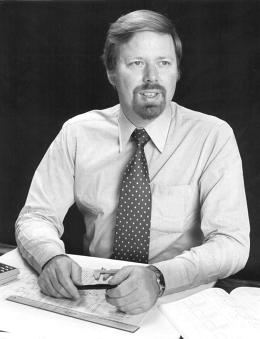
Bob Harp’s reminiscence board worked neatly, and he recognized that it will probably serve as a beneficial industrial product. lacking the time and tools to commercialize it, he put it on the again burner for just about a year. but in 1976, when his spouse and Ely had been looking to hatch a industry, he provided his Altair memory board as a potential product.
As exciting as the chance sounded to Lore, computers represented totally overseas territory for both her and Ely (and, for that topic, nearly everybody else on this planet in 1976). Lore remembers: “I referred to as my pal and i mentioned, ‘Carole, what do you take into accounts starting a computer company? i’ve this little 8K RAM board.’ She stated, ‘What’s a RAM board?'”
To familiarize Lore and Carole with the nascent box of personal computer systems, Bob Harp took the pair to a local laptop convey. There, the trio witnessed an eager, untapped market filled with enthusiasts peeling off wads of money to purchase unrefined, half-baked merchandise. “It used to be a wholly new trade,” recalls Bob. “In modern industries, the merchandise are all just right. they’ve been perfected over a few years. however at the moment, the competition used to be very bad.”
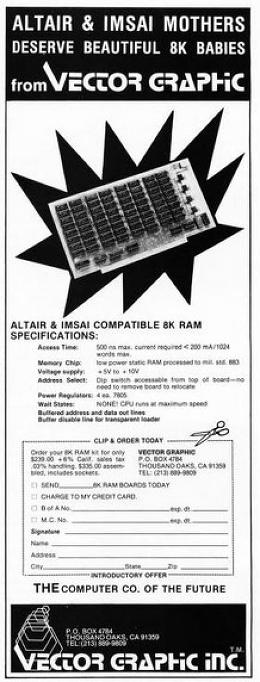
Lore and Carole discovered the speculation of getting their very own bodily product to sell appealing. With a good technical underpinning and a focal point on style and aesthetics, they knew their boards might stand beforehand of the p.c.. The pair even went as far as to are trying to find out specifically-hued capacitors that will now not clash with the opposite elements on their circuit boards. “I don’t comprehend what folks thought of us: two girls on the lookout for colored capacitors,” Ely told InfoWorld in 1982. “however we were occupied with what colors went into our boards.”
because the duo geared up to begin the machinery of a brand new supplier, which they registered in August 1976, Bob steered the title of the brand new agency: Vector image. He based the identify on a definite kind of video board he wished to design. He by no means did design that board, however the name stuck.
despite originating the identify and the product, Bob made up our minds to maintain his constant job at Hughes whereas Lore and Carole ran the Vector trade. (once they couldn’t answer a purchaser question, they called him at work.) Lore Harp was president and CEO, and Ely specialised in advertising and communications. Bob Harp, who changed into chairman, didn’t join the company on a full-time foundation except July 1977.
Lore Harp and Carole Ely started Vector with $6,000 in capital. The pair soon hit upon a components for promoting Bob’s board in kit type by the use of mail order, promoting in nationwide magazines. with the aid of requiring cash-on-delivery and allowing no returns, the corporate discovered itself money float certain from the very beginning.
Lore and Carole arrange two desks in a spare bedroom of the Harp place of abode, and for a short while, the entire family helped gather the pc boards in their suburban electronics factory. in step with a 1982 Time magazine article, they tested computer systems on the dining room table and saved packing supplies in a bathe.
When it came time to barter with element suppliers, Lore at first had bother convincing them that the pair supposed serious trade. lacking a proper workplace, she tried to take conferences outside of the house each time that you can imagine. (sooner or later, Vector grew large enough that it moved its operations right into a former department store.) AMD wanted astronomical costs for memory chips, but finally, they struck a greater deal with Fairchild, which provided Vector’s chips for some time.
“Let’s Do the whole machine”
Vector’s reminiscence board proved wildly successful—by way of the factors of the still-minuscule business—and its gross sales fueled speedy boom. soon, Bob designed other boards for S-one hundred bus machines, including a prom board that eradicated the necessity for hobbyists to manually enter a boot-up program sequence by the use of entrance panel switches (as was once the norm with the Altair on the time). He followed that with a text-primarily based video board, every other memory board, a serial I/O board, an influence supply, and a motherboard that allowed the boards to connect collectively. Hobbyists got each of these constituent items with enthusiasm, they usually all sold rather smartly. As trade persisted to develop, your next step for Vector changed into an glaring one. “We saw that there was a good marketplace for the individual boards,” recalls Bob, “so I stated, ‘well, let’s do the whole machine.'”
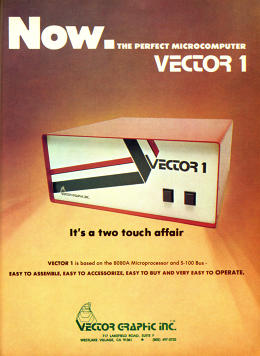
the end result was once the Vector 1, launched in 1977, which shipped in two case colours, green or orange (or “rust” as they called it at the time). Lore and Carole’s emphasis on visual aesthetics led them to offer this choice of colours at a time when many corporations gave little notion to what their computer systems appeared like (and it used to be most effective starting to grow to be a provided that PCs shipped in a case at all). An try and order orange circuit boards to compare the orange case went awry when the primary batch of fifty came back purple.
Distinctively, the Vector 1 got here geared up with simplest two front panel buttons—power and reset—which symbolized ease-of-use in an technology marked via rows of intimidating toggle switches. (A later variant referred to as the Vector 1+ constructed a floppy disk drive into the case; it was the first pc to supply this selection, which in the end become an trade standard.) The Intel 8080A-based totally Vector 1 retailed for $849 fully assembled (about $3,288 nowadays when adjusted for inflation) or $619 as a equipment.
at the time of the Vector 1’s launch, private computer systems retailed via mom-and-pop shops and tiny chains. To market their pc, Lore and Carole started out contacting every dealer they might in finding, constructing precious relationships that became an excellent global supplier community inside a few years. The outlets would promote Vector’s products to native consumers, and soon, Vector began training the dealers with a certification course of for customer reinforce as smartly. The loyalty of this network would become the corporate’s ace-in-the-hole throughout the intensely competitive years in advance.
In April 1977, when the Vector 1 and Apple II both launched at the West Coast computer Faire, the two corporations (who came about to be situated hundreds of miles aside) by no means dealt with each and every other. Vector felt it was focused on the excessive-finish of the quite mature S-a hundred market, while Apple was once marketing a wholly untested new structure for the everyman. as a result, Vector didn’t to find Apple’s products threatening to start with.
“We always appeared on the Apple II as more of a toy,” remembers Lore, “We went immediately after the industry market, and no longer a lot the personal laptop market.” Bob Harp concurs, although he a great deal preferred Wozniak’s design of the Apple II. Carole Ely remarks that she envied the Apple II’s stylish design and interesting nature to individuals.
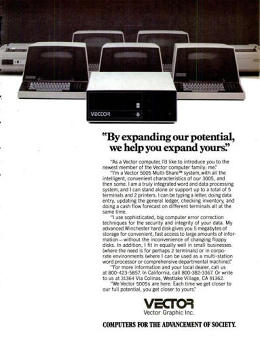
The computer market as a whole grew at a torrid %, with revolutions in design and value rolling in every week. inside two years, the business moved far from hobbyist build-it-your self kits and into more whole-widget, plug-and-play programs. the entire hallmarks of an S-one hundred-primarily based machine—the massive, individual boards with numerous parts, the hulking metal chassis, big energy supplies, and expensive connectors—intended that S-100 machines might now not compete value-wise with less advanced dwelling computer methods.
As those finances machines (such because the TRS-80 and Commodore PET) captured the decrease finish of the computer market, S-a hundred vendors like Vector, Cromemco, and IMSAI fast shifted into the higher-finish of the non-public computer market the place earnings had been comfortable, and where sophisticated business buyers regarded the endless customization choices afforded with the aid of S-100-based machines as a boon.
the variation in price between the outdated-school S-one hundred computer systems and the new shopper PCs might be dramatic: In 1979, a floppy disk-primarily based Apple II+, the high-end of the home computer market and the low finish of the small industry market, retailed for around $2000 in a naked-bones configuration. A Cromemco or Vector S-a hundred bus machine (relying on RAM and if it shipped with a difficult disk) may cost between $4000 and $20,000—and that is the reason not even counting for inflation, which finds that the up to date worth equivalents of those better-end computer programs soars into Mercedes-Benz territory.
but as these less expensive machines become more and more able, Vector discovered Apple nipping at its heels. A key moment came in 1979, when the first spreadsheet, VisiCalc, brought on many businesses to consider buying a pc for the first time—and VisiCalc best ran on the Apple II. “It was just huge competitors from both sides, from the highest to the underside of the market,” remembers Ely. “the top finish, the techniques end, and the bottom end, the private finish, with Apple.”
Onward and Upward
With the small-trade strategy in thoughts, Vector’s sales rocketed, and the firm introduced successor machines all through the late Nineteen Seventies that served their favored market with ample productivity tool programs and full turnkey methods.
quickly, the story of the California housewives who created a multi-million buck firm captivated the clicking, and Lore Harp discovered herself on the duvet of multiple magazines.
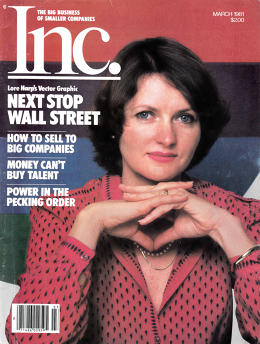
Vector used to be speedy becoming a big deal—probably the most earliest examples of a laptop brand that broke freed from the business change mags and into the mainstream. “whereas Godbout, Morrow, Cromemco, and a lot of new S-a hundred machines and and cards can be seen in the newest difficulty of Byte,” wrote pundit-to-be John C. Dvorak in InfoWorld, “you can in finding Vector graphic merchandising in BusinessWeek and Lore Harp on the quilt of the March 1981 issue of Inc., a small-business magazine.”
in the industry, Lore and Carole turned into often called the “girls in green and white” for the company colours they ceaselessly wore to alternate conferences. Lore turned into a press darling. She enjoyed friendships with industry luminaries like invoice Gates and pundit-turned-computer-firm-founder Adam Osborne. within the early Nineteen Eighties, she would even turn out partying in Paris, France, with California governor Jerry Brown and Steve Jobs as part of a delegation of California technologists.
Lore wasn’t just considered a tech superstar, but as a business maven in her box. In a 1983 article revealed after Vector started to run into bother, the the big apple times‘ Michael S. Malone mentioned that “Lore Harp fast confirmed she was once more than just a trade supervisor as she guided the company with a clever feel of the market’s wants and prospects.”
As chief government, Lore prided herself on frugality, sure cash float, and fending off debt. And on a private stage, she says that she discovered her function as a mother of two young women to be a significant business asset, parlaying her maternal instinct right into a respect for the well-being of her workers and their families. “Vector was an awfully close domestic, and a good bit of this used to be instantly brought on by how Lore ran the company as our CEO,” remembers Dennis Wingo, who labored as a technician for Vector all through the early Eighties.
according to Wingo, Lore turned into known for her people-centric administration model, running her firm as a meritocracy with promotions accorded by way of accomplishments and exact talent relatively than instructional bona fides or gender. When requested in a 1981 interview why she did not namely hire extra girls at Vector, Lore remarked that she employed whomever was once absolute best for the job, despite intercourse.
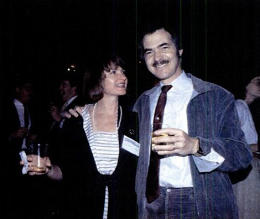
as of late, Lore says she by no means encountered vital opposition from men within the business. When she heard rumors of the the term “ice maiden” used to explain her, she took the identify-calling as a sign of her effectiveness and moved forward.
In her prior occupation on Wall street, Carole Ely had witnessed fewer alternatives for the advancement of girls in these corporations. At Vector, she discovered no such troubles—perhaps due largely to the fact that she and her boss, both ladies, had outlined an organization tradition that strived to operate in an equitable method.
in the meantime, Bob Harp felt the media paid an excessive amount of consideration to the truth that Carole and Lore were girls, when it was he, in reality, who made the corporate that you can imagine with his hardware designs. (still, he admits today, he admired Lore’s tenacity and talent to steer.)
As head of PR, Carole understood the enchantment of a woman tech govt, and had no hassle stepping apart while Lore emerged because the face of the corporate. “It simply happened naturally,” says Ely. “people would meet Lore. She used to be in the market at all times.” however this unrelenting focal point on the corporate’s female president started out to ruffle Bob’s feathers. Carole remembers that after press consideration grew to become to technical interview questions, she always integrated Bob Harp in discussions with journalists. (looking back over press coverage of the time confirms this, even if he was never featured as prominently as Lore.)
on reflection, it can be clear that the early success of Vector resulted from a team effort, and that the corporate thrived on the distinctive aggregate of skills of its founders. Between them, Lore, Carole, and Bob represented three of the primary divisions of any technology firm—administration, marketing, and engineering—and that is a powerful recipe for any founding team to have. “It was once a excellent staff, the three of us,” says Ely. “A good trio.”
With nice successes come great pressures, however, and in 1980, the partnership commenced to crack on the seams. The stresses of the company took a heavy toll on Bob and Lore’s marriage, prompting them to are searching for a divorce, which despatched ripples of discontent all through the company. (Time quoted Bob Ely: “It used to be an ego battle. She needed to do things a technique; i wanted to do them any other.”) while Lore hoped that the damage-up would have little influence on the future of the firm, the break up between the corporate’s president and its chief product fashion designer set the stage for rough instances. It used to be a bad time to be having problems, as a result of Vector’s toughest days lay simply in advance.
The Lumbering large Awakens
around 1980, IBM started knocking on doors within the microcomputer business beneath the pretense of potentially licensing present computer hardware to serve as its own IBM-branded non-public pc. IBM used its clout because the major mainframe laptop maker to convince many small computer corporations to “open the kimono” (within the parlance of the day) to divulge the nature of their know-how and information on how moneymaking the computer industry truly was. the company famously conferred with main software developers Digital research (which didn’t take the consult with too severely) and Microsoft (which did).
Vector got this sort of visits from IBM in 1980. Don Estridge, head of the brand new pc venture at IBM, arrived with seven buddies at Vector’s headquarters, which was once then in Thousand alright, Calif. Lore recalls the scene: “I looked at him and stated, ‘you already know, this is a comic story. you will have $25 billion in revenue. We’re a $25 million firm and you want to OEM from us?'”
No agreements were made, but the assembly ended on well mannered phrases and IBM walked away with a Vector three system for evaluation. “I called a gathering right away afterwards and mentioned, ‘we’ve twelve months before they come in, and the whole world goes to alter,'” remembers Lore.

From her vantage level in advertising, Carole Ely was scared of IBM entering the industry. “It absolutely freaked me out,” she says. “IBM offered considered one of our systems and took it right down to Boca Raton where they had their new construction labs. We thought, ‘smartly, there we go. let’s have a look at what happens.'”
With clear indicators of IBM coming into the small techniques business, Lore knew the clock used to be ticking. She set a goal to take Vector public whereas she nonetheless had the chance.
whereas IBM didn’t turn out the use of Vector’s hardware (or even copying it, as some at Vector had feared), IBM did one thing much more devastating: they studied the very efficient relationships Vector had made with its business instrument suppliers, together with Peachtree device, maker of a well-liked accounting bundle. earlier than the launch, IBM had extended secret contracts to a number of of those instrument carriers, assuring that the IBM computer would also have the ability to run the purposes proper from the start. This undermined a substantial amount of Vector’s device-derived competitive advantage within the small-trade pc world.
It was once now not but glaring to everybody in the trade that the battle over the way forward for private computing would be fought through tool on a commoditized platform, but Bob Harp had a robust hunch, and he saw the IBM pc as an existential danger to the entire company: “It used to be clear to me that IBM was once going to force the device in the architecture of the methods,” remembers Bob. “And with the intention to survive, you needed to be suitable.”
Bob fought with Vector’s board of directors, insisting the company must sell an IBM laptop suitable computing device, but Lore and the board resisted. From Vector’s standpoint, the choice to turn out to be IBM computer suitable was some distance from clear-minimize. Had the corporate switched all of a sudden to a new, unproven platform, it could have alienated its clients through leaving behind the CP/M-primarily based methods that that been a confirmed success for over 1/2 a decade.
The struggle over pc compatibility introduced Bob’s discontent to a head. He used to be already uncomfortable working for his soon-to-be ex-wife, and now he noticed impending doom on the corporate’s horizon. in line with Bob, he began engaged on a aspect venture on firm time with the categorical intention of stressful Vector’s board of administrators.
“I felt that I needed to leave the corporate and begin any other one in response to laptop compatibles,” says Bob. Vector’s board granted his want, firing him in 1981. the next yr, Bob founded Corona knowledge methods, which created some of the first IBM computer clones. losing the engineer who had designed almost all of its hardware merchandise on account that 1976 was an enormous blow for Vector.

but issues weren’t all doom and gloom in 1981. previous in the yr, as Vector ready to go public, Lore made positive that every Vector employee shared in the fruits of the sale, granting 100 shares of inventory for yearly they labored on the firm.
“The underwriters have been up in fingers,” she remembers, “They said, ‘Our inventory is for administration.'” Lore defined that, in her thoughts, the lowest paid worker on the meeting line is as vital as everyone else within the company. If he ignored a screw or made a mistake, she defined, they might all take the blame.
needless to say, this used to be a popular transfer throughout the company itself. As for the founders, they ended up with over $3 million apiece when Vector went public in October, providing one million shares at $13.
“It was exhilarating. It was implausible,” recalls Lore of the IPO, which would characterize her crowning fulfillment on the company. With that launch, Lore changed into the first female founder to take her firm public on the brand new York inventory change.
but the party was once short-lived. IBM pc’s leap into the private pc market in August of that year had a clarifying effect on the business. companies which might have sold an S-one hundred device up to now instead began shopping for IBM PCs or machines suitable with IBM’s hardware and Microsoft’s MS-DOS working system.
Vector answered to the IBM chance—two years later—with a twin-processor way in the Vector 4, a machine which blended the corporate’s longstanding CP/M fortify with restricted MS-DOS compatibility as an meant bridge to an IBM pc-dominated future. but it used to be too little, too late. the corporate’s fate had been pre-ordained as soon as it became far from genuine IBM computer compatibility. Vector used to be already useless; it simply didn’t understand it but.
the beginning of the end
In 1982, Lore married tech media magnate Patrick McGovern, the founder of analysis firm IDC and publisher of Computerworld and InfoWorld (and, later, computer World, Macworld, and GamePro). She sought a brand new beginning with extra time devoted to her marriage. In June of 1982, she handed the reigns of president and CEO to Honeywell veteran Fred Snow, while remaining chairman. Snow’s tenure coincided with a downturn in sales, so in may just of 1983, Vector’s board yes Lore to return as president and CEO. She began commuting over with an 800-mile round shuttle day by day from her home in San Francisco.

by way of 1983, managing Vector was like looking to chart the vacation spot of a sinking ship. gross sales began to tank as a result of small businesses business switching to IBM PCs in droves. Between the grueling daily commute and an absence of affection from the board of administrators, Lore had had enough. She stepped down as soon as again, this time for excellent. It was once 1984; she used to be forty years previous.
In her absence, Vector grew determined. The agency’s income slid from a peak of $36.2 million in 1981 to simply $2.1 million in 1984. one of the firm’s closing fashions, the Vector SX, served the company like a Band-help on a jugular wound. In a 1983 InfoWorld article during its launch that April, Vector marketing director Ron Tharpe cluelessly claimed that the SX’s IBM-compatible floppy drives put Vector on “an evolutionary direction toward larger IBM compatibility.” At that sluggish rate, you can still handiest surmise that the intention was being one hundred% IBM laptop appropriate via 1990.
instead, time ran out, and speedy. The unpleasant finish sport for Vector photograph concerned plunging income, desperate loans, defaulting on debt, and management losing keep an eye on of the company to a loan guarantor. the corporate filed for chapter in 1985, ceased operations in 1986, and a retaining firm liquidated all its property, marking the ultimate demise of Vector photograph, Inc. in 1987—a decade after the launch of its first laptop.
Forgotten history
in fact that, from 1982 on, no person could have saved Vector. The agency indirectly shared its fate with the each different laptop maker that did not jump on the IBM clone bandwagon. the only consumer pc company that survived into the Nineties with its personal significant platform was once Apple, and even then, simply barely. in the end, Vector had one heck of a wild experience, made its mark on the laptop industry, and helped create the template of industry-oriented device and products and services that IBM might mimic with its computer for a dose of guaranteed success.
on account that then, non-public laptop history has been written by means of the victors. the corporations that survived had been able to dictate the historic narrative of the industry—and that history frequently places the two Steves at floor zero in Silicon Valley scuffling with evil giants like IBM, leaving little room for outsiders from southern California, so much much less the rest of the sector.
fact is much less tidy. by the point of Vector’s disintegration, all three of the unique founders had moved on to different companies (Ely left Vector without drama in 1983). As typical, Lore Harp McGovern remained fearless: her very next project pioneered a disposable instrument that allowed women to urinate standing up. “It was once just a little bit ahead of its time,” she says, without any trace of understatement.
In 2015, the tech business’s gender hole is still an issue that generates headlines. it would be easy to conclude that this gap was an authentic sin of a male-dominated trade. however we’ve forgotten how two girls from California ran a firm that pioneered influential practices akin to attention to product aesthetics, vertical integration (Vector has its own in-house device builders), and establishing training networks, providing packaged laptop solutions, and treating employees like an extended domestic. a few of what Vector pioneered is now intertwined into the tech industry’s DNA.
due to Vector, the origins of the personal laptop can’t be separated from the story of ladies in expertise. the personal laptop has all the time belonged to all and sundry.
quick company , read Full Story
(162)












